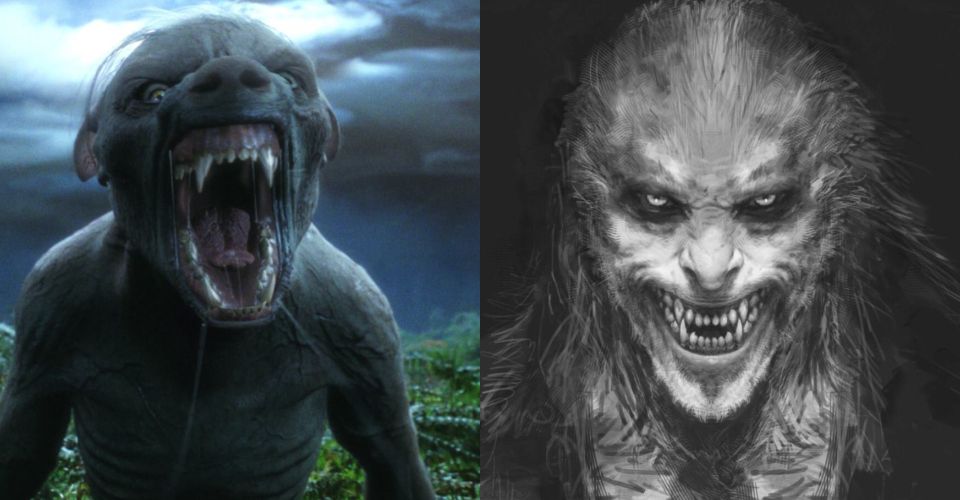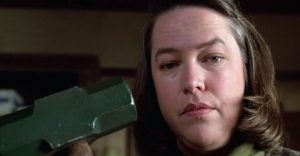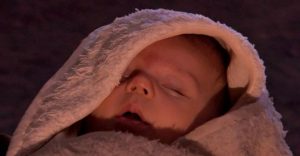Harry Potter: 10 Things You Didn’t Know About Werewolves

Werewolves are neither the rarest nor the most powerful of all the magical beasts in Harry Potter, but they are certainly among the most vicious. The origins of Lycanthropy are not covered in canon, nor the details of the mechanics of transference: except that it is transferred when werewolf saliva mingles with human blood.
Remus Lupin and Fenrir Greyback are the two best-known werewolves in the story—although the former maintains that his condition has no influence on his state of mind, the latter essentially lives the stereotype by terrorizing and murdering innocent people. This proves that werewolves have complex inner lives, regardless of their transformation – and that there is a lot about them more casual fans don’t know. (Rowling’s article about Werewolves, as published on Wizarding World, is referenced throughout this list.)
10 The Death Eaters Don’t Hide Their Contempt For Werewolves

Voldemort manipulates a horde of magical beings into his army, reminding them of the prejudices they face in a society that shuns them—insisting that only he can offer a better life. Giants and werewolves are the two main groups that pledge allegiance to the Dark Lord, but the latter treats them like expendable trash.
In fact, werewolves are forbidden from having the Dark Mark imprinted on their arms, a clear sign that the arrogant Death Eaters consider werewolves beneath their status. Voldemort and his minions have been heard making disparaging comments about these creatures, as well.
9 Transformed Werewolves Can Mate With Each Other

Although rare, it’s possible for werewolves to mate and give birth to babies. That said, any offspring would resemble an actual wolf in terms of appearance while possessing an inordinately high level of intelligence.
Werewolf-children prefer not to attack humans without provocation, though, which is the direct opposite of their parents’ general temperament. Interestingly, there are rumors of a werewolf-descended wolf pack living in the Forbidden Forest.
8 Remus Lupin’s Father Is Indirectly Responsible For His Son’s Condition

In her article on Remus Lupin, Rowling mentions The Ministry of Magic’s interrogation of Fenrir Greyback regarding the mauling of a pair of children, but the werewolf is released because he successfully tricks the committee into believing his lies.
Lyall Lupin does not fall for his alibis, and goes on a rant about werewolves, calling them “evil” and “deserving nothing but death.” Greyback takes the bigoted remarks personally, as one would, but his idea of revenge—forcing Lycanthropy on Lyall’s toddler son—is beyond abominable.
7 Werewolves Are Denied Access To Basic Social Resources

Werewolves are unable to control themselves when transformed, which results in the general public’s fear of them. Unfortunately, this terror is often fanned by the flames of bigotry, refusing werewolves access to jobs, education, poverty alleviation schemes, and so on.
As such, they are trapped in a vicious cycle of loneliness and rage, explaining why they willingly support Lord Voldemort’s terrifying takeover of the Ministry. Unsurprisingly, much of this so-called “anti-werewolf legislation” is put forth by Dolores Umbridge.
6 Being A Werewolf Comes With Side-Effects

A werewolf’s natural urge is to attack people, which it does with gusto, assuming there are enough in the vicinity. However, this means that they usually inflict injuries on themselves if they are unable to satisfy their human bloodlust.
This side-effect can be mitigated by providing the werewolf a satisfactory distraction, like when the other three marauders heroically give Lupin some much-needed company in their respective animagi forms.
5 Dittany & Powdered Silver Seals The Deal

Silver is not werewolf-kryptonite, at least in Rowling’s universe, but it has been used in medicinal preparations to seal bite wounds caused by them.
Dittany, a restorative herb, is blended with powdered silver for use as an ointment, the only product that has any chance of stopping blood loss and restoring the victim to health. Unfortunately, some patients refuse the treatment because they find death to be preferable over living as a werewolf.
4 The Werewolf Capture Unit Classifies Werewolves According To Threat Level

The Ministry’s Department for the Regulation and Control of Magical Creatures oversees the Werewolf Capture Unit. Since their tasks are quite risky, members of this division are often killed; however, their success rate far exceeds any work-related fatalities.
According to the video game, Harry Potter: Hogwarts Mystery, the Werewolf Capture Unit has an abysmal record when it comes to containing captured werewolves, making it yet another political misfire funded by taxpayers.
3 The Wolfsbane Potion Is Complicated And Expensive To Make

The Wolfsbane Potion is developed by Damocles Belby, a favorite pupil of Potions Master Horace Slughorn, at some point during the First Wizarding War.
The brew demands a highly complex and expensive manufacturing method, making it inaccessible to most people—and certainly most werewolves, who are already poor to begin with. In addition, the Wolfsbane Potion helps relieve the symptoms of Lycanthropy, but is nothing more than a temporary stopgap.
2 A Werewolf Attack Without The Full Moon Has Interesting Results

Fenrir Greyback savagely declares his desire to attack as many Hogwarts students as he possibly can, managing to injure Bill Weasley during the Battle of the Astronomy Tower.
However, since Greyback is a human when he attacks Bill, the latter develops wolfish habits like a taste for uncooked flesh, or some unexpected hair growth. The exact rate of conversion is ambiguous, but it’s likely that the phases of the moon play an important part in the process.
1 The Homorphus Charm May Or May Not Work On Them

Among Gilderoy Lockhart’s many (fake) achievements is his triumph over the Wagga Wagga Werewolf in Australia—actually accomplished by a mysterious Armenian wizard. In his accounts, Lockhart claims that the Homorphus charm transforms a werewolf back into a human.
It seems that the spell does work, albeit temporarily, which makes sense considering it is not universally known as the cure for Lycanthropy. In addition, it’s unlikely that the worst Hogwarts professor of all time even knows how to cast the Homorphus charm in the first place.
About The Author

















